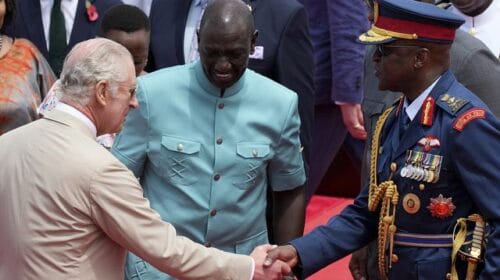First flood, then drought: climate-resilience project helps farmers thrive in Mozambique
Mozambican farmer Alima Matusse is the head of a household of six and she used to worry that her children would go without nutritious food because her small plot of land was bone dry in the hot season and waterlogged when it rained.
Thanks to a climate-resilience project providing irrigation and drainage in her home province of Gaza, Matusse has been able to increase the area she cultivates from a quarter to three quarters of a hectare and has added kale, cabbage, carrots to her staple crop, maize.
In 2013, Gaza Province was devastated by heavy floods, with almost 200,000 people uprooted from their homes. Just three years later, Mozambique was struck by severe drought, affecting nearly half a million people and leaving 400,000 people in need of food assistance.
With the aim of bolstering the resilience of farming communities to these recurrent climate shocks, the African Development Bank-supported the Baixo Limpopo Irrigation and Climate Resilience Project (BLICRP) implemented in Xai-Xai District of Gaza Province.
The extra income Matusse has generated through the project has allowed her to save money through a savings and credit association, build her house, pay for school fees and purchase two goats with the aim of transitioning to cattle farming in the future.
Since BLICRP was started in 2013, she has noticed that many of her neighbours have returned home after migrating to the capital Maputo or even South Africa in search of work. This reverse migration was accelerated in the 2017/18 planting season, when more than 400 farmers received intensive training in new technologies for rice production.
Matusse’s ambition now is for her children to go to university, and to construct a house of bricks so she does not have to repair her reed house every year.
“The project gives an opportunity to the unemployed youth to make a living through farming. This project is our real dream,” she said.
The seven-year BLICRP project provided around 9,000 smallholder farmers in Xai-Xai with climate-resilient infrastructure, including two pumping stations to improve drainage and irrigation, and a 52 kilometre drainage network servicing a total area of 2,000 hectares. Nearly 48 km of rural roads were rehabilitated to a climate-resilient design.
 The project also added value to agricultural production, mainly in rice and horticulture, with the construction of an agro-processing centre, CEPHOL in Xai-Xai city, which opened in June 2019 to purchase farmers’ produce and provide primary processing – washing, sizing and packaging – as well as cold storage and conservation to reduce post-harvest losses.
The project also added value to agricultural production, mainly in rice and horticulture, with the construction of an agro-processing centre, CEPHOL in Xai-Xai city, which opened in June 2019 to purchase farmers’ produce and provide primary processing – washing, sizing and packaging – as well as cold storage and conservation to reduce post-harvest losses.
With agreements to supply the wholesale and retail markets in Maputo and sweet potatoes to the South African market, CEPHOL has allowed local farmers to reach buyers way beyond their usual markets.
Another beneficiary is 57-year-old farmer António Gaveta, who owns 10 hectares of land within the BLICRP scheme area. A surge in his agricultural productivity has allowed this proud father to invest $3,200 per year in the education of three of his six children.
His daughter Aurora is following in her father’s footsteps by studying agricultural economics, his son Antonio is on a healthcare management course and his younger daughter Mira is studying public administration.
According to Gaveta, “the BLIRCP project has allowed me to move forward with my own project, which is slightly different from that of the members of my community. In fact, I have what I like to call an education project”.
Within the project area, Agro Sumbunuca, a family-run company, opened to supply approximately 1,000 farmers with seeds, herbicides, equipment, animal feed and poultry chicks – the first private-sector operation under the BLIRCP scheme.
The major challenge now lies in attracting more private sector companies to engage with farmers and to cement this “farm-to-fork” value chain success story.
Total funding for BLIRCP was an estimated $44.08 million; $25.79 million was provided by a loan from the Bank Group’s African Development Fund. The Strategic Climate Fund extended $15.98 million in financing and the Government of Mozambique $2.31 million.




